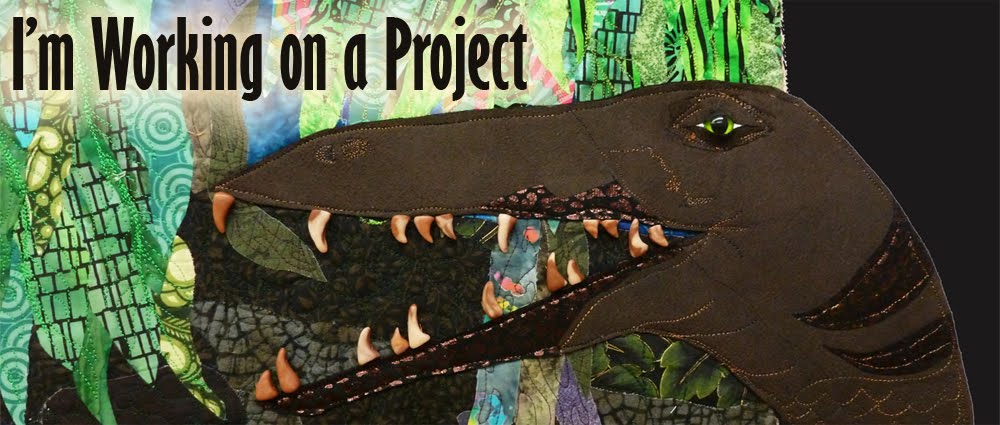Invasive species are something that have been in the back of my mind for many years. In middle Tennessee where I went to college kudzu is an obnoxious problem, growing freely and readily over everything in its path. Similarly, ice plant is an awful problem in many parts of California, especially the Monterey coast where it escapes from gardens and flourishes on the beach dunes, competing out all the dune grasses and native biodiversity. Alas, neither of those are particularly problematic in the Great Plains, but we have plenty of invasive species of our own.
The quilt features the following insects, plants, and animals that are considered invasive in the Great Plains:
eastern red cedar
European starling
southern pine beetle
grass carp
red imported fire ant
parrot's feather (an obnoxious aquatic plant)
yellow sweet clover
 |
| Invasive Species, c. Shannon Conley 2019 50x31" Photo: Mike Cox |
 |
| Invasive Species, c. Shannon Conley 2019 50x31" Photo: Mike Cox |
 |
| Invasive Species, c. Shannon Conley 2019 50x31" Photo: Mike Cox |
 |
| Invasive Species, c. Shannon Conley 2019 50x31" Photo: Mike Cox |
 |
| Invasive Species, c. Shannon Conley 2019 50x31" Photo: Mike Cox |
And the artist statement:
I live in the southern Great Plains, an ecosystem that stretches throughout the central United States and into Canada. One of the biggest threats to native species and ecosystems in this area is invasive species. They arrive, usually due to human inadvertence, and then flourish, ruining habitat, competing for resources, and damaging native plants and wildlife. As people who love being outdoors, it is our responsibility to take care we are not transferring or enhancing the effects of invasive species. They spread through poorly cleaned watersports equipment, shoes and clothes from hikers, and escape from gardens and yards, among other ways. Educate yourselves on invasive species in your area and what you can do to prevent their spread.
I hope you enjoyed seeing this piece!

Amazing work, thank you for sharing.
ReplyDeleteJust amazing! I would be shocked if you didn't get in.
ReplyDelete